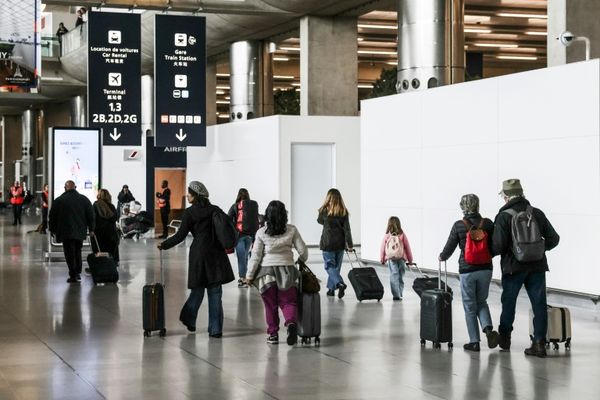
There is an elaborate bird rescue mission under way in the town of Walldorf. As one of the last homes of the ground-nesting crested lark in Germany, the local district is eager to protect their three remaining breeding pairs. Consequently, they have ordered residents to lock their cats indoors over the summer for the next three years, or face hefty fines: €500 (£420) if a cat is caught outside; €50,000 if it takes an endangered lark.
“I’m really glad that’s happening,” says Peter P Marra, an ecologist at Georgetown University in the US and one of the authors of the 2016 book Cat Wars: The Devastating Consequences of a Cuddly Killer. This kind of policy is the right approach, he says, “but we shouldn’t wait until it’s down to a few individual birds.” In his opinion, no domestic cats should be out in the environment, anywhere.
In the US, the debate about free-roaming cats has been raging for years. Marra’s own work has shown that cats – mostly feral but also pets – kill billions of US birds and mammals every year. And while it’s primarily motivated by perceived risks from coyotes and traffic, 70% of US cat owners now keep their cats inside, up from 35% in the late 1990s.
UK cat owners feel differently: about 70% let their cats out, a similar percentage to other European countries. Access to the great outdoors is considered good for cats’ wellbeing, a position shared by charities such as Cats Protection and Battersea Dogs & Cats Home, and there are few predators to worry about. The EU has even declared that it believes in the free movement of cats. “It’s a massive societal difference [from the US],” says Robbie McDonald, a wildlife ecologist at the University of Exeter.
But cats are prolific hunters of wildlife in the UK and Europe too. A study published in April estimated that UK cats kill 160 to 270 million animals annually, a quarter of them birds. The real figure is likely to be even higher, as the study used the 2011 pet cat population of 9.5 million; it is now closer to 12 million, boosted by the pandemic pet craze. Seen alongside drops in bird numbers across the EU and the UK, it is “quite alarming”, says lead author and cat ecologist Tara Pirie from the University of Reading.

Such worrying numbers have now prompted the charity SongBird Survival to launch their “Friends Not Food” campaign, hoping to inspire cat owners to take action and limit hunting. So is it time to reconsider the British laissez-faire attitude to free-roaming cats? According to researchers, the science on cats’ impact is far from settled – but the answer is still yes.
It is well established that cats can have serious impacts on wildlife and even cause extinctions. The most famous example is Lyall’s wren, a small, flightless bird that once lived on Stephens Island, New Zealand. When Europeans arrived on the island in the late 1800s, they brought their cats, and probably within the year, Lyall’s wren was gone.
This story opens Marra’s book. In it, he argues that the domestic cat is not just an invasive species on small Pacific islands, but pretty much everywhere. As such, it puts native wildlife at risk wherever it is. “The evidence is so clear,” says Marra. “I’ve analysed it every way possible.”
In the UK and the rest of Europe, however, cat invasions happened a long time ago. Cats were brought from the Fertile Crescent to south-eastern Europe several thousand years ago, and then introduced to Britain by the Romans. “We’ve had a much longer history of dealing with any impact that they may have had,” says Philip Baker, a mammalogist at the University of Reading, adding that Britain and Europe have had native wildcats for millennia. “There’s at least some evolutionary history of that kind of predator that prey species would have evolved alongside.”
The problem, Pirie says, is “the sheer number” of domestic cats. On average, a British pet cat brings home around five items of prey a year. Researchers estimate this is about 23% of their actual kills, which makes it about 22 kills a year. Multiplied by the number of pet cats, it is clearly a huge number of lives lost. If you compare this with the collective population of native wild predators such as stoats and pine martens, Pirie says, cats “outnumber them something like fivefold”.
Though the relationship between how many cats live in an area and how many birds they take is not straightforward – for example, cats roam less when surrounded by neighbouring cats – there is evidence that when cat numbers go up, so do cat kills. A large 2019 study found that the number of garden birds killed by cats in France and Belgium has increased by more than 50% in 15 years, alongside an increase in those countries’ pet cat populations.
And while many birds visit gardens, conservationists are particularly worried about wild areas like forests and heathland, which are home to vulnerable species such as Dartford warblers and nightjars. Pirie’s study, which used GPS trackers to map how cats roamed around Reading, showed that cats living next to natural habitats visit them regularly. This means that although it is mostly urban birds such as robins and blue tits that encounter cats, rural species could be at risk, too.
***
It sounds bad, but not everyone is convinced that cats are actually putting bird populations under pressure. “The kneejerk reaction is that they must be having some sort of impact – they’re killing millions and millions,” says Baker. However, numbers can be deceptive. According to Baker, the birds most hunted by cats have so many young that they can afford to lose a lot of them. In the UK, he says: “I just categorically say there is no evidence of an impact.”
The UK’s largest bird charity, the Royal Society for the Protection of Birds (RSPB), is not particularly concerned about the impact of cats on the British mainland. Instead it focuses on what it says is driving UK bird declines: global warming, intensive agriculture and expanding towns and cities leading to habitat and food loss. “While we know that cats do kill large numbers of birds in UK gardens, there’s no evidence this is affecting decline in the same way that these other issues are,” said a spokesperson.
A big reason why they are less worried is the evidence that cats primarily take “the doomed surplus”: weak or injured birds likely to die anyway. In 2008, Baker led a study in Bristol showing that birds killed by cats on average had less fat and muscle than birds killed by collisions with windows. While there could be other explanations – such as birds having less fat in the morning when cats tend to pounce – Baker says that the fat and muscle scores were so low that the birds were “in dire trouble before they got killed”. Another study from 2000 found that cat-killed birds in Denmark had smaller spleens, indicative of a weaker immune system.
That said, cats do take birds in good shape, and Robbie McDonald says evidence from the US shows that large numbers of cats can have population-level impacts. “But it’s hard to generalise,” he says. Cats might pose a risk to some species some of the time; for others, not at all.
Charlotte Bartleet-Cross from SongBird Survival argues that it’s about paying attention to birds already under pressure. “A lot of these bird species that are on the [UK birds of conservation concern] list are actually similar to the bird species that are frequently caught by cats,” she says. “This could be having a further impact on numbers.”
Take the greenfinch. An outbreak of the parasite-induced disease trichomonosis led to a 65% UK decline in the population in the mid-2000s, which landed it on the conservation red list. As a ground feeder, it’s easy prey for cats. Dunnock, numbers of which have dropped by more than a third since the 1960s due to disappearing food sources, is another ground feeder and frequent cat prey. It is currently on the amber list.
***
Although Baker sees no evidence that cats are responsible for UK bird declines, he agrees that there is a problem worth discussing. “Cats are one of the biggest welfare issues – if not the biggest welfare issue – for wildlife in this country, in terms of the number of individual birds and animals affected, and the length of time many will suffer before they die,” he says. The numbers of animals involved in badger culls and foxes killed for sport “pale into insignificance” in comparison, he says.
So should the British adopt the American way and ditch free roaming? It is possibly already happening. Though it is early days, a growing minority are keeping their cats fully indoors. And that worries Daniel Cummings from Cats Protection. “We’re not saying that all cats need to go outside,” he says, but if indoor-only became the norm, some cats “would have significantly reduced welfare”. Backing that up is a 2019 study that suggests many US indoor cats might not get the stimulation they need.

Instead, Cats Protection recommends a dusk-till-dawn cat curfew, along with SongBird Survival and the RSPB which hopes it will be a “win-win”. Cats and birds are most active at dusk and dawn. “It’s a sensible compromise,” says Cummings. “You’re effectively reducing the risk of [the cats] getting in a road traffic collision overnight, and also reducing the risk of predation.” There is some evidence that cats do get hit by cars at night slightly more often than during the day.
To further reduce hunting, people can make their gardens bird-friendly and have their cats wear a colourful bib (the evidence on bells is less clear). McDonald’s research also found that feeding cats a diet with meat-derived protein reduces the amount of prey they bring home, as does playing with them for at least 10 minutes a day. “That’s the sort of thing that anybody can do,” he says. “And it’s really enriching the life of the cat as well.”
Pirie, who has spent much of her career studying wild leopards in South Africa, is also conflicted about confining cats permanently. She thinks cat-free buffer zones around conservation areas could be a good idea, but that the most important thing is to listen to people’s concerns and find compromises together. “Most people who own cats are animal people, they don’t want to have this impact on wildlife either.”
But from Marra’s perspective, none of it goes far enough. “I don’t think there should be a compromise,” he says. “It’s about people taking responsibility for their animal.” What that means, however, might prove to be a cultural difference.
• This article was amended on 14 August 2022. It was the RSPB which said it hoped a curfew would be a “win-win”, not Cats Protection as stated in an earlier version owing to an editing error.







